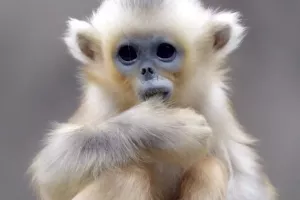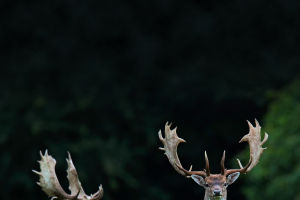Itty bitty birds, so small you almost think you imagined them when they flit by, rarely get noticed. The birds that get all the attention are usually the flashiest, like the birds of paradise. The toughest ones, like hawks and eagles, also hog the spotlight. Tiny species deserve a little attention too. Meet some of the world's smallest bird species.
1. Bee Hummingbird
Weighing in at barely two inches in height, the bee hummingbird takes the crown for the smallest bird in the world, even beating out other members of the notoriously small hummingbird family. Their eggs are about the size of a coffee bean and can comfortably be placed in a nest the size of a quarter. Keeping things in currency terms, each bee hummingbird weighs less than a dime. Or to put things in a more naturalist perspective, they’re only a tiny bit bigger than the average bumblebee. Unfortunately, that size also makes them a target for the same animals that would feed on bumblebees — most notably mongoose, wasps, frogs, and spiders. The heartbeat of these miniature birds averages an astounding 80 beats per second, but they can more than double that in the height of the mating season. That’s energy that they can’t afford to waste, considering that the bee hummingbird has to feed on up to 1500 flowers a day for its sustenance. The bee hummingbird isn’t just difficult to find because it’s so small. It also requires taking a trip to Cuba. This isolated island nation is also the only known habitat of the species.
2. Goldcrest
Whereas not the smallest bird in the world, the Goldcrest is the smallest bird in Europe with an average weight of 6 g and length at about 9 cm. Goldcrests have a grey-green color on their bodies with yellow and black stripes on their heads. These species appear in European folktale as the king of birds, and their golden crowns showcase this. Goldcrests’ wings spread to around 13.5 to 15.5 cm wide. They may require minimal resources, unlike larger birds, and have adaptive features for survival. For instance, Goldcrest's beak is very thin. This makes it easy for the bird to access food in small spots. Like the world’s smallest bird, the Goldcrest also feeds on insects. Goldcrests feed on things like spiders, bugs, caterpillars, and moth eggs. You’ll find it hard to distinguish between a male and female Goldcrest as they share many physical similarities. However, the crest is what really sets the male apart from the female when you examine these birds. You’ll most likely notice the crest’s prominence during mating season, which they use as a way to attract a female Goldcrest. Male Goldrests bow their heads and also lift their crests, and the colorful nature of the crest then catches the female’s attention.
3. Red-Cheeked Cordon-Bleu
This colorful bird is a species of African finch with sky blue feathers, and males have a spot of red on their cheeks that make them look like they are perpetually blushing. Individuals only grow to be about five inches in length and weigh only about .35 ounces on average. That's roughly the weight of just three pennies. This species can be found in the wild in central and eastern Africa.
4. Cape Penduline Tit
The Cape penduline tit — sometimes known as the southern penduline tit — is far more prodigious than the world’s tiniest bird. Grayish-yellow in color, these birds extend from the tip of South Africa all the way up into Angola in the east and Zimbabwe in the west. They make their habitats in shrub plains and deserts, roosting and making their nests in high and thorny trees. Their nests are particularly ingenious, resembling a wastebasket and including a hatch that they can pull shut with a foot. These roughly 3 inch long birds are unique in that they mate monogamously but gather into family units of three to four to help hatch the eggs and raise the children. They feed primarily on fruits, larva, and insects. They’re even known to raid meals from spiderwebs — a dangerous proposition given that spiders are often in the same weight class.
5. Weebill
With a name that accurately reflects its small body, the Weebill is another one of the smallest bird species. Weebills have a grey-brown color on their heads, olive-brown back, and pale yellow underparts. Their feathers have grey tints. This tiny bird also has a short small beak or bill. On average, a Weebill is around 8 cm in length and 6 g in weight. Male and female weebills look similar. When distinguishing the old from the young, you’ll notice that the young birds have greyer-looking eyes compared to the pale cream of the adults.


